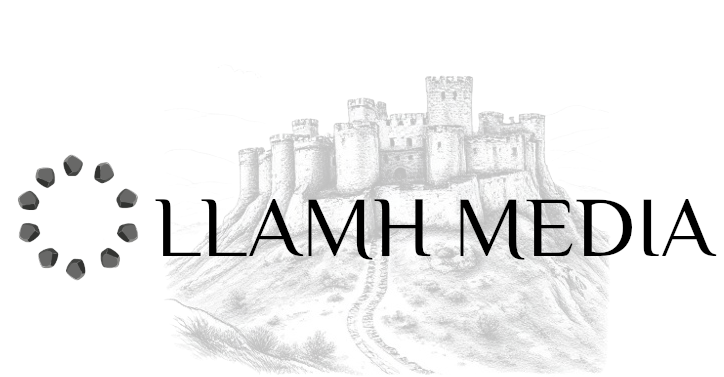Saint Patrick, the patron saint of Ireland, is known for his role in bringing Christianity to the Irish people. While many details of his life are shrouded in legend and myth, there are some generally accepted historical facts about his life. He is known as the “Apostle of Ireland”, being the primary patron saint. The other patron saints being Bridgid of Kildare and Saint Columba.
The Early Life of Saint Patrick
Saint Patrick was born in Britain, probably in the late 4th century, into a relatively wealthy family. Patrick’s father, Calpurnius, is described as a decurion (Senator and tax collector) of an unspecified Romano-British city, while his grandfather was a priest from Bonaven Tabernia. This information tells us that Patrick was a member of the nobility in Roman-Britain. His given name was likely Maewyn Succat. Gaelic raiders captured Patrick at the age of 16, taking him to Ireland as a slave. While in Ireland he spent six years working as a shepherd. Patrick writes in the Confession that the time he spent in captivity was critical to his spiritual development.
Saint Patrick’s Conversion to Christianity
During his captivity, Patrick turned to Christianity for solace and strength. According to his own writings, he had a spiritual awakening during this time. He claimed that he received a vision from God instructing him to escape captivity and return to his homeland. The vision consisted of a voice telling him, “Your ship is ready”. Patrick escaped and travelled to a port, two hundred miles away. At this port he found a ship and with some difficulty convinced the captain to let him onboard. After three days sailing, Patrick and the other members of the crew landed in Britain. Patrick’s arrival on British shore would be followed by a difficult journey through the British wilderness. He toiled through the thick forest for 28 days, becoming faint from hunger and exhaustion. With no other option, Patrick prayed for some form of sustenance. Shortly after his prayer, Patrick and his crew came across a herd of wild boar. This incredible outcome would further cement Patrick’s faith and convince the other members of his party of the validity of his teachings.
Scholarly Pursuit
Now that Patrick had managed to escape captivity and return to Britain, he reunited with his family. Over time, Patrick pursued religious studies and became a priest and later a bishop. His main body of study took place on the continent. At this time, Gaul was a centre of learning.
Saint Patrick’s Mission
After becoming a bishop, Patrick felt a calling to return to Ireland, the land of his former captivity, as a missionary. He believed he had a divine mandate to bring Christianity to the pagan Gaelic people. Patrick recounts that he had a vision a few years after returning home:
“I saw a man coming, as it were from Ireland. His name was Victoricus, and he carried many letters, and he gave me one of them. I read the heading: “The Voice of the Irish”. As I began the letter, I imagined in that moment that I heard the voice of those very people who near the wood of Foclut, which is beside the western sea – and they cried out, as with one voice: “We appeal to you, holy servant boy, to come and walk among us”.
At around 432 AD, he arrived in Ireland and began his missionary work.
Conversion of the Gaels
Saint Patrick is credited with using traditional Irish symbols, such as the three-leafed shamrock to explain the concept of the Holy Trinity (Father, Son, and Holy Spirit) to the Irish people. He is also known for using bonfires to celebrate Easter, which eventually evolved into the modern St. Patrick’s Day festivities.
“What is particularly interesting about St Patrick’s choice of bonfires as a means of celebration, is that Gaels traditionally practiced this long before Patrick’s mission. This shows us that St Patrick appealed to his audience sentimentally. He managed to convince the Gaels that the adoption of Christianity was a natural succession. Which honoured that which had come previously complimentarily.”
Death of Saint Patrick
Saint Patrick died on March 17, around the year 461 AD, in Saul, County Down, Ireland.
Legacy of Saint Patrick
The Christianisation of Ireland is largely due to Saint Patrick. He is one of the most recognized and venerated saints in the Christian world. St. Patrick’s Day is not only a religious observance but also a cultural celebration of Irish heritage and identity.
It’s important to note that many of the details of Saint Patrick’s life have been embellished over the centuries, and some aspects of his story may be more legend than historical fact. Nonetheless, he remains an important figure in the history of Christianity and the cultural heritage of Ireland.

